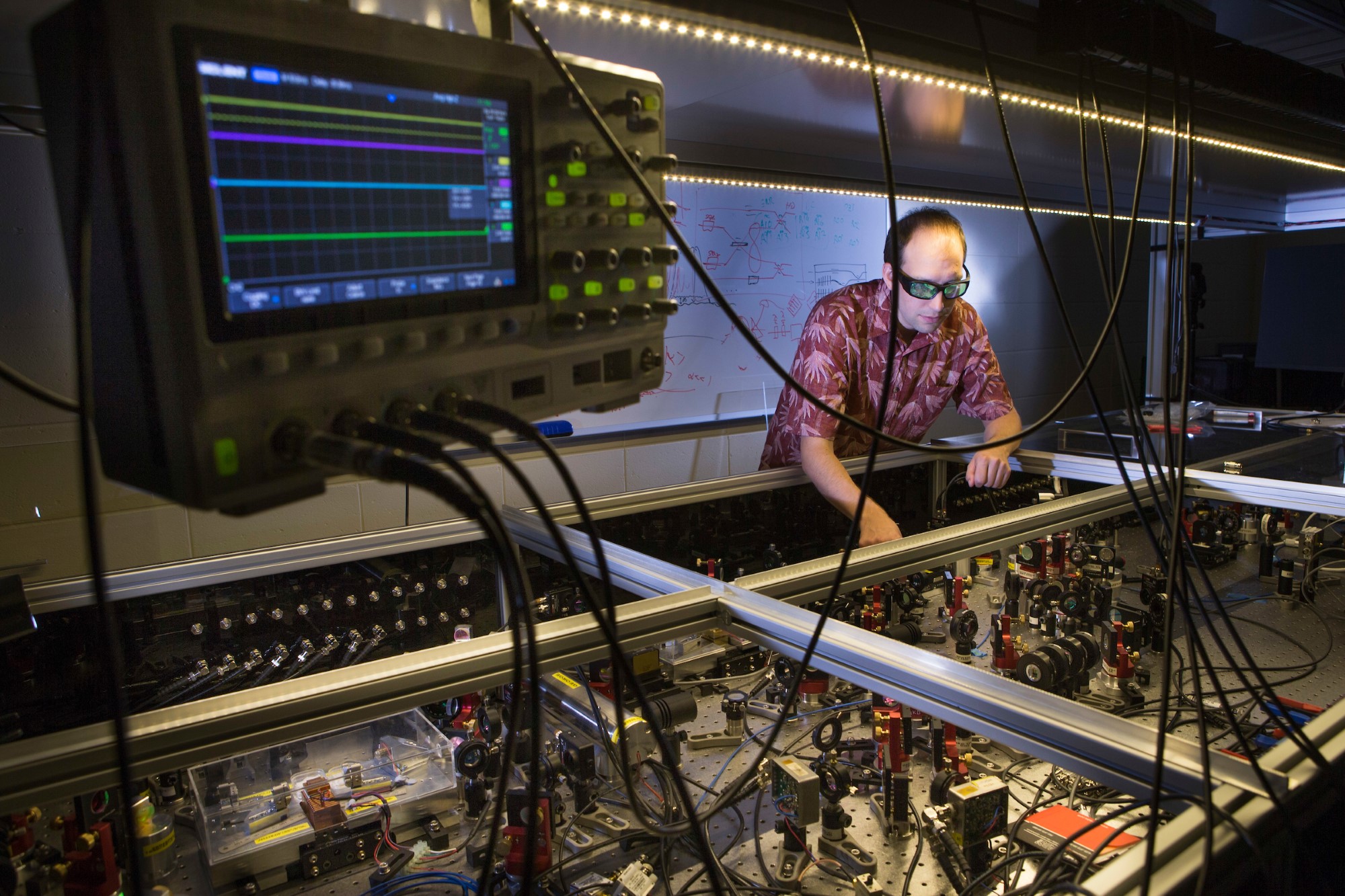
Research projects
Discover the forefront of astronomy and astrophysics through our projects, ranging from deep-space communication systems to groundbreaking adaptive optics. Explore our diverse, ongoing research initiatives shaping the future of space science.
Displaying 1 - 15 of 171 project(s).
This project aims to develop a Python package to post-process 3-D hydrodynamics simulations (e.g., from RAMSES or Quokka) to create synthetic observations for JWST/HST/VLT.
Optical instrumentation prototyping could be made significantly faster and cheaper with the availability of on-demand, customisable opto-mechanical components.
Theme
- Instrumentation
Student intake
Open for Summer Scholar, Bachelor, Honours students
People
- Dr Jesse Cranney, Supervisor
- Dr Michael Copeland, Supervisor
Optical instrumentation prototyping could be made significantly faster and cheaper with the availability of on-demand, customisable opto-mechanical components.
Theme
- Instrumentation
Student intake
Open for Summer Scholar, Bachelor, Honours students
People
- Dr Jesse Cranney, Supervisor
- Dr Michael Copeland, Supervisor
In this project the student will investigate the feasibility of a 3D printed deformable mirror with an embedded water-cooling system, and its expected performance under extreme heat conditions based on the selected material and actuator configuration.
Theme
- Instrumentation
The successful applicant will join the ANU team and will assist with the development of instrumentation for the optical communication team
Theme
- Instrumentation
Student intake
Open for Bachelor, Honours, PhD students
People
- Associate Professor Francis Bennet, Supervisor
- Associate Professor Tony Travouillon, Supervisor
- Dr Doris Grosse, Supervisor
- Dr Elisa Jager, Supervisor
- Dr Michael Copeland, Supervisor
The successful applicant will join the ANU team and will assist with the development of instrumentation for the optical communication team
Theme
- Instrumentation
Student intake
Open for Bachelor, Honours, PhD students
People
- Associate Professor Francis Bennet, Supervisor
- Associate Professor Tony Travouillon, Supervisor
- Dr Doris Grosse, Supervisor
- Dr Elisa Jager, Supervisor
- Dr Michael Copeland, Supervisor
The successful applicant will join the ANU team and will assist with the development of instrumentation for the optical communication team
Theme
- Instrumentation
Student intake
Open for Bachelor, Honours, PhD students
People
- Associate Professor Francis Bennet, Supervisor
- Associate Professor Tony Travouillon, Supervisor
- Dr Doris Grosse, Supervisor
- Dr Elisa Jager, Supervisor
- Dr Michael Copeland, Supervisor
The successful applicant will join the ANU team and will assist with the development of instrumentation for the optical communication team
Theme
- Instrumentation
Student intake
Open for Bachelor, Honours, PhD students
People
- Associate Professor Francis Bennet, Supervisor
- Associate Professor Tony Travouillon, Supervisor
- Dr Doris Grosse, Supervisor
- Dr Elisa Jager, Supervisor
- Dr Michael Copeland, Supervisor
The successful applicant will join the ANU team and will assist with the development of instrumentation for the optical communication team
Theme
- Instrumentation
Student intake
Open for Bachelor, Honours, PhD students
People
- Associate Professor Francis Bennet, Supervisor
- Associate Professor Tony Travouillon, Supervisor
- Dr Doris Grosse, Supervisor
- Dr Elisa Jager, Supervisor
- Dr Michael Copeland, Supervisor
This project will use observations of star clusters with the Hubble Space Telescope to disentangle the multi scale nature of star formation in local spiral galaxies.
Theme
- Stellar and planetary astronomy
Student intake
Open for Honours students
Observatory
People
- Dr Kathryn Grasha, Supervisor
- Professor Mark Krumholz, Supervisor
This project will use observations of star clusters with the Hubble Space Telescope to disentangle the multi scale nature of star formation in local spiral galaxies.
Theme
- Stellar and planetary astronomy
Student intake
Open for Honours students
Observatory
People
- Dr Kathryn Grasha, Supervisor
- Professor Mark Krumholz, Supervisor
This project has two components: developing the science case for the instrument, defining the mission parameters that are necessary to ensure the science goals are achieved; and, for a student so inclined, physically building the telescope and camera system.
Theme
- Instrumentation
- Stellar and planetary astronomy
- Structure and evolution of the Cosmos
Student intake
Open for Bachelor, Honours, PhD students
People
- Associate Professor Bradley Tucker, Supervisor
- Dr Joice Mathew, Supervisor
This project has two components: developing the science case for the instrument, defining the mission parameters that are necessary to ensure the science goals are achieved; and, for a student so inclined, physically building the telescope and camera system.
Theme
- Instrumentation
- Stellar and planetary astronomy
- Structure and evolution of the Cosmos
Student intake
Open for Bachelor, Honours, PhD students
People
- Associate Professor Bradley Tucker, Supervisor
- Dr Joice Mathew, Supervisor
A new search for strong gravitational lenses in the MAGPI survey
Theme
- Structure and evolution of the Cosmos
A resolved star formation study of galaxies using TYPHOON
Theme
- Structure and evolution of the Cosmos
